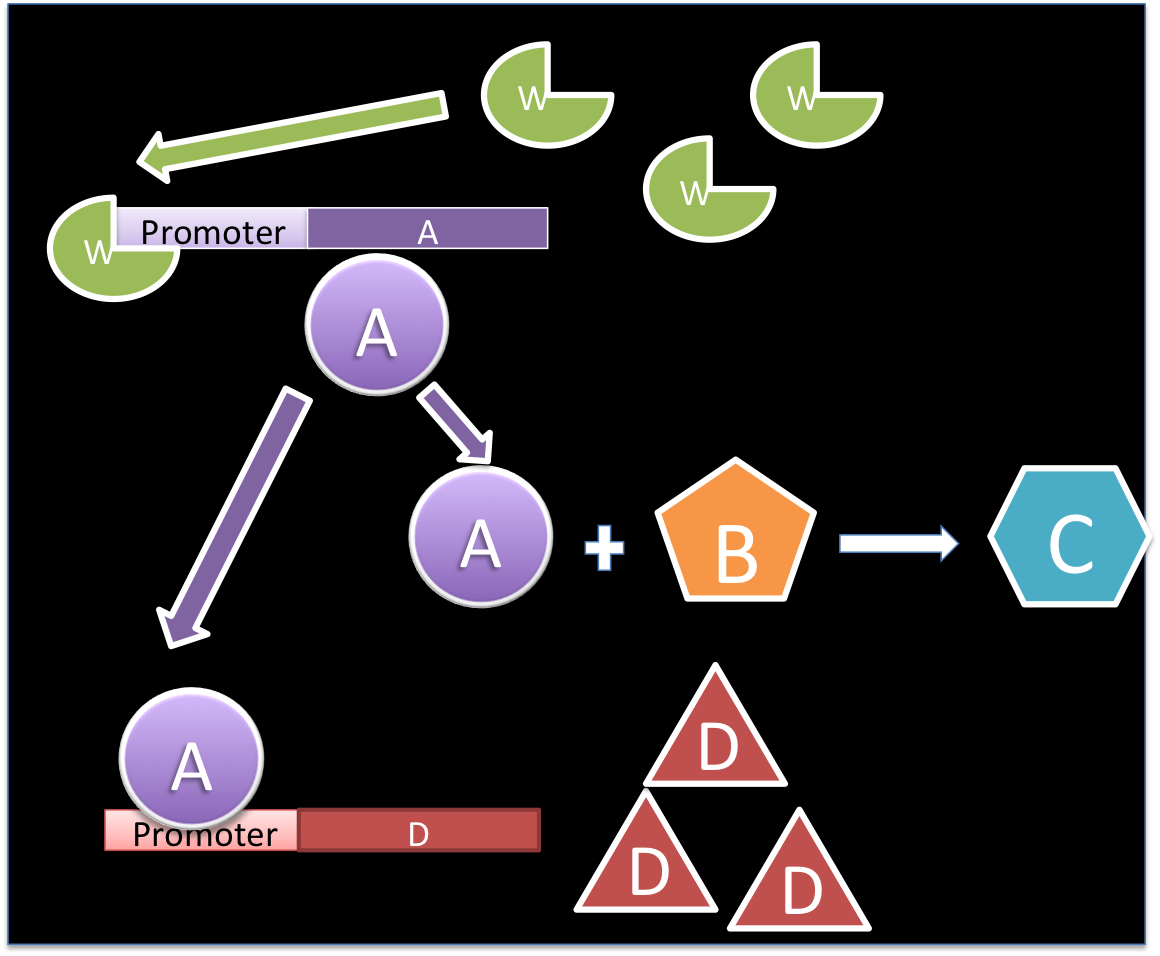Team:Colombia/Modeling/Diff
From 2012.igem.org
Team Colombia @ 2012 iGEM
Template:Https://2012.igem.org/User:Tabima
Differential equations
Before doing experiments with our bacteria modified and the plants, we can check if our design works by doing a mathematical model of it. Writing equations that define the system proposed and seeing their results will tell us if our design will work correctly or if we need to change something.
The first set of equations written are the differential equations. This type of mathematical model is named deterministic, because it will give a specific behaviour of the molecules in the time, without taking into account the probabilities involved in each of the events.
When we want to write the differential equations that represent the change in time of the molecules, the first thing to do is to understand all the processes that occur with these molecules of interest. Once al the processes are understood, an equation for each of the molecules is done, based on a basic mass balance.
Acumulation= Input+ Generation-Output-Consumption
In a biological system, the accumulation is the change in time, the input and output are related with the processes of exportation and importation of the molecule in the cell, the generation is related to the production by a gene or by a chemical reaction, and the consumption is related to the chemical reactions too. All these terms depend on the kinetics of the reactions it could be a simple multiplication or a complex kinetic like Hill.
To understand all of this better here is a brief example:
The molecule W promotes the production of A, which is used in a reaction with B for producing C and for the promotion of D.
Based on the material balance we can see that there is not exportation or importation hence there is no input or output term. The generation term is the production by the gene promoted by W, this generation behaves with a Hill kinetic:
The consumption term is divided in two: first the reaction with B, that can be expressed as a first order reaction with a kinetic constant m and the promotion of the protein D that has a Hill kinetic:
 "
"


